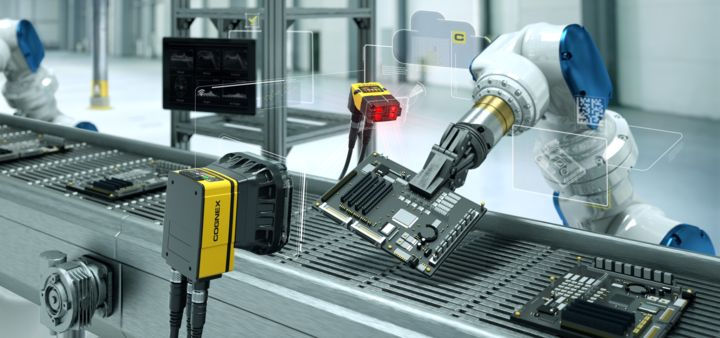Mining companies face a dual challenge: they need to responsibly use and protect natural resources while driving shareholder value. The industry’s’ business license ‘constantly emphasizes the sustainability of the environment and business. Although this may be a new concept for other industries, for leading companies in the mining industry, they began to face this challenge many years ago, and now the requirements are even stricter.
Driven by investment in construction, increased communication networks, and rapid growth in electrification, the demand for minerals is soaring, which is part of the world’s move towards net zero growth. The International Energy Agency predicts that by 2040, the demand for lithium may increase by 13 to 51 times its current level, while the demand for cobalt and graphite is expected to increase by 6 to 30 times during the same period. The growth of population will continue to drive the growth of the construction and manufacturing industries, therefore the demand for copper, iron ore, and other minerals remains strong.
Given this growth and the increasingly pressing climate issue, mining companies are required to make meaningful environmental commitments without negatively impacting their profits. These two seemingly contradictory yet equally important goals can be achieved through the same strategy: automation. Technologies, including better utilization of data, will help improve operational efficiency while achieving significant improvements in sustainability.
Operational sustainability
Mining operations are generally carried out in remote areas, which poses a significant challenge to production continuity. Deploying appropriate automation technologies can lay the foundation for efficient and reliable operations, increase uptime and security, and effectively address this challenge.
Obtaining actionable recommendations from real-time operational data is key to maximizing normal operating time. However, in many mining processes, the level of automation is still low and insufficient to achieve advanced operational goals. Intelligent wireless sensors have brought new breakthroughs, as they are easy to deploy and scale on critical asset devices. These sensors can measure and analyze critical mechanical equipment health status data, predict maintenance and change trends, and achieve predictive maintenance of operations, solving potential problems before they become actual problems.
Automation technology can provide the most important safety guarantee for the mining industry. Wired and wireless sensors can provide advanced monitoring of the stability of tailings dams, while wireless gas detectors can continuously monitor the atmosphere of underground mines to ensure personnel safety. In both cases, sensors will alert the operations and maintenance teams to potential new issues, enabling them to take action before the problem becomes a security risk.
In order to improve safety and reliability, mining companies must be able to have real-time access to the health status of critical mining equipment. For example, the unexpected shutdown of an electric rope shovel poses a threat to both personnel safety and production objectives. By monitoring the vibration of key components of the electric shovel, such as the pushing device, crane, and rotary drive equipment, operators can accurately assess the health status of the equipment and detect potential problems early.
The operational sustainability value brought by these solutions can be measured in millions of dollars. A global mining industry user used Emerson’s AMS mechanical equipment health monitoring system, which provides online equipment status monitoring and enables predictive maintenance to prevent problems before they occur, saving $5.8 million annually.
 Ultimately, data from these automated systems is integrated and analyzed through advanced analytics software to provide managers with a clearer and more comprehensive overall operational view. Then, this knowledge can be applied to optimize workflows and investment decisions to further improve overall efficiency.
Ultimately, data from these automated systems is integrated and analyzed through advanced analytics software to provide managers with a clearer and more comprehensive overall operational view. Then, this knowledge can be applied to optimize workflows and investment decisions to further improve overall efficiency.
The new data collected from wireless sensors and more advanced automation technologies lays the foundation for aggregating different operational data, which in turn promotes the creation of remote operation centers. The remote operation center enables operators, managers, and experts to stay away from hazardous sites, conduct extensive data analysis, and achieve overall optimization of the enterprise.
Environmental sustainability
In terms of environmental stability, mining companies need to optimize the use of water resources and energy. This can also start with automated monitoring.
In order to strengthen water infrastructure, the use of wired and wireless sensors, flow meters, valves, software, and analytical technologies can help operators understand the amount of water they recycle, use, and reinvest into the system, which is crucial for regulatory compliance requirements. Automation can also help operators simplify and optimize control processes, improve pump reliability, enhance slurry flow control, reduce tailings volume, and provide overall visibility into water resource management. Advanced control systems can automatically adapt to constantly changing conditions to maintain sustained good operating conditions.
As the mining industry gradually introduces more renewable energy, enterprises face the challenge of maintaining stable power supply throughout the entire operation process. Automation technology can effectively manage and schedule the electricity of these microgrids, ensuring that this increasingly complex resource continues to provide power for excellent operation.
Integrated solutions for promoting sustainable development
Emerson provides a complete portfolio of automation technology, intelligent sensors, control systems, software, and analytical products to optimize mining operations. This automation technology helps to collect and analyze valuable data that drives business decisions for operational and environmental sustainability.




